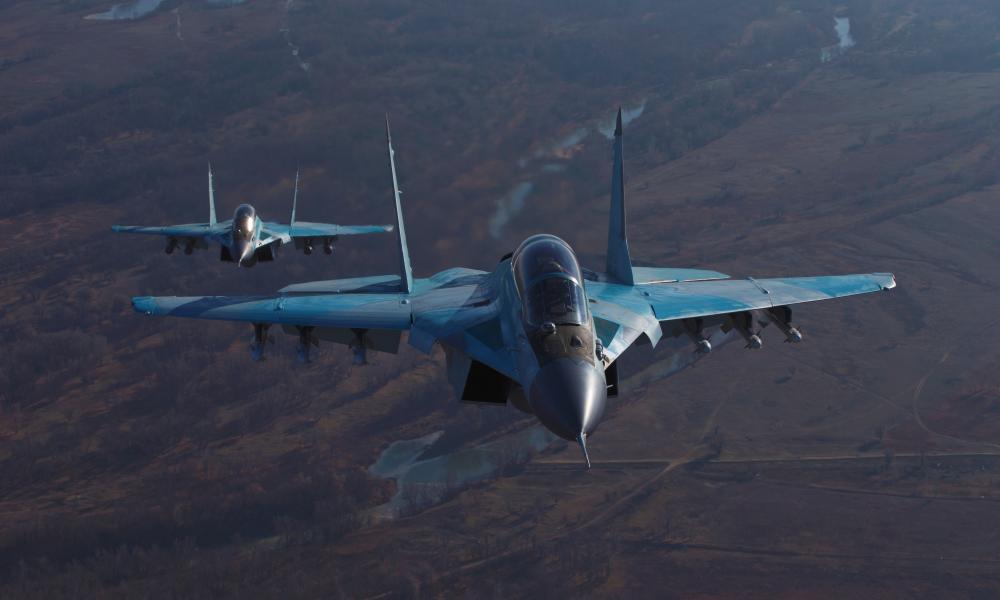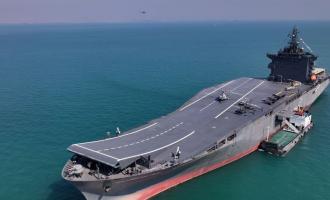In recent weeks, the mass production of the Russian MiG-35 fighter jet has been increasingly reported in the Russian media. In fact, this is not a guess, but an officially announced restart of serial production of the Russian fighter.
According to Russian experts, Russia's domestic defense industry seriously fears that in the event of a large-scale conflict, there will not be enough combat aircraft. For this reason the United Aircraft Corporation (UAC) decided to restart mass production.
The Russian MiG-35 fighter is an interesting case, as it is characterized as a "4++" generation fighter while many believe that it "surpasses rival fighter aircraft of the corresponding generation", but the course of its production and development has not confirm.
Attention is drawn to the fact that only 6 MiG-35 units are in service with the Russian Aerospace Forces. No deliveries scheduled for this year (2023). According to Russian media sources, such deliveries are planned for 2024. There is no word yet on how many MiG-35s Russia would like to acquire.

The MiG-35 actually has many advantages.
First, it is easy to adapt any of the latest weapons to modernized light fighters, since the applied principle of "open architecture" allows modern weapons to be modified in the shortest possible time.
Second, the attack aircraft will be equipped with a Zhuk-AM active electronically scanned array (AESA). Why is it important? The faster the enemy is detected, the faster it will be destroyed.
According to some reports, the station is capable of detecting any target with an effective area of about 5 m² at a distance of about 225 km. This means that an F-22 type target with an EPR of 0.5 m² will be detected by Russian radars already at a distance of 80 miles (126 km) from the plane.
Older fighters F-15, F-16, F-18 will appear on the radar from a distance of 200 km. In general, the functionality of the Zhuk-AM is similar to the capabilities of the F-16 radar.

This is not only a Russian view. Many Western experts also believe that the MiG-35 is the most advanced Russian fighter jet that Russia has managed to stop producing.
The MiG-35 can track up to 30 targets and engage six targets simultaneously. The MiG-35 has been described by US publication 19fortyfive.com as a "brain power". That is, the aircraft can easily integrate and operate autonomously with other air platforms and fighters of the Russian Air Force. Something doable for today's fifth generation fighters (MiG-35 is 4++ generation).
The emphasis on electronic warfare capabilities, sophisticated sensors and high-precision weapons make the MiG-35 potentially lethal, especially at long ranges.
The MiG-35 can reach a top speed of Mach 2.25. It can fly at altitudes of up to 65,000 feet and the airframe is designed to withstand 9G in the positive limits and 3G m in the negative limits. The MiG-35 is powered by two Klimov RD-33MK turbofan engines with afterburner.

What the pilots (testers) emphasize is the greater firepower of the MiG-35, which has nine "hardpoints" i.e. missile launch positions, while at the same time the fighter aircraft is compatible with a full range of guided bombs, but also with other advanced weapons and missile systems.
The MiG-35 would be a big hit in Ukraine. This fighter is perfectly suited to target tanks, ships and heavy artillery. It is armed with guided and unguided bombs, air-to-air and air-to-surface missiles and a highly lethal 30mm cannon. The MiG-35 has an integrated electronic warfare pod, making it highly suitable for attacking enemy air defense systems.
Western experts give it an "A" rating for maneuverability. This fighter is extremely versatile. It performs missions at supercritical angles of attack without any problems at an increased level of sustained and available g-loads and a high degree of yaw angle.







